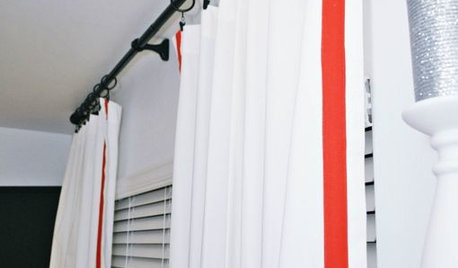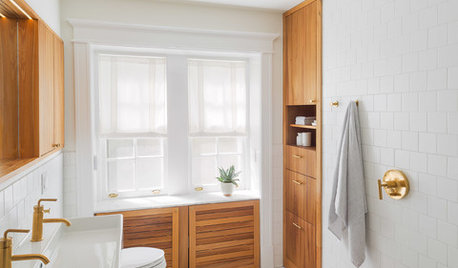bands with multiples
User
9 years ago
Related Stories

DECORATING GUIDESDesigner Details: Banded Drapery Panels
Bands of Color Add Custom Appeal to Your Window Treatments
Full Story
COLORLoving Color: More Ways to Like Stripes
Wake up a room with multiple types of stripes — or just one dramatic band of color
Full Story
WINDOW TREATMENTSEmbellishing Tricks for Cost-Effective Custom Curtains
Get curtains that look high end — even if you don't sew — with just a little trim here or a little banding there
Full Story
LIFEYou Showed Us: 20 Nutty Home Fixes
We made the call for your Band-Aid solutions around the house, and you delivered. Here's how you are making what's broken work again
Full Story
DECORATING GUIDESHouzz Tour: Room for Everything in Just 596 Square Feet
Multipurpose furniture, careful color choices and tucked-away storage let a once-cluttered house breathe
Full Story
DIY PROJECTSMake an Upholstered Headboard You Can Change on a Whim
Classic stripes today, hot pink tomorrow. You can swap the fabric on this DIY headboard to match your room or your mood
Full Story
HOUZZ TOURSMy Houzz: French Colonial Mansion in India
A businessman's gracious, expansive beach house welcomes a host of international visitors
Full Story
ROOM OF THE DAYRoom of the Day: Clean and Simple Master Bath With Lots of Storage
Custom cypress cabinets, basic tile and clever storage solutions turn a cramped and crumbling 1912 bathroom into a spacious gem
Full Story
DECLUTTERINGDownsizing Help: How to Edit Your Belongings
Learn what to take and what to toss if you're moving to a smaller home
Full Story
HOUZZ TOURSMy Houzz: Many Styles Meld Handsomely in a Vermont Countryside Home
With a traditional exterior, a contemporary interior and lots of Asian furniture, this home goes for the element of surprise
Full StoryMore Discussions









ms. violet grey
catsrose
Related Professionals
Erie Landscape Architects & Landscape Designers · Marina Landscape Architects & Landscape Designers · Boca Raton Landscape Contractors · Flagstaff Landscape Contractors · Middle River Landscape Contractors · Munster Landscape Contractors · Nanuet Landscape Contractors · Pine Hills Landscape Contractors · Pleasanton Landscape Contractors · Shirley Landscape Contractors · Shoreview Landscape Contractors · Albuquerque Siding & Exteriors · Camp Springs Siding & Exteriors · Charlotte Siding & Exteriors · Franklin Square Siding & Exteriorsroseseek
seil zone 6b MI
vasue VA
Kippy
UserOriginal Author
thonotorose
thonotorose
seil zone 6b MI